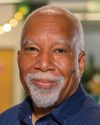Historically Black Colleges and the U.S. Military

According to Inside Higher Ed’s “Black Colleges Matter,” HBCUs enroll approximately 9 percent of all black undergraduates in higher education today, including almost 11 percent of all black students attending bachelor’s degree-granting institutions.
“They are able to produce such results because of their explicit commitment to educating black students in nurturing and supportive environments,” said C. Rob Shorette II, a former HBCU presidential aide, and a graduate of Florida A&M University.
Tuskegee University: Originator and producer of the famous "Tuskegee Airmen," in partnership with the U.S. Army Air Corps
Long before Prairie View A&M became the first historically Black college to host the Naval Reserve Officers Training Corps (NROTC) Program in 1968, the Tuskegee airmen laid down the first milestones toward integration of the U.S. military under President Harry Truman in 1948.
A group of Black combat pilots during World War II, the Tuskegee Airmen served as military aviators in the U.S. armed forces. The 996 pilots and 15,000 ground personnel in black units came from New York City, Washington, Los Angeles, Chicago, Philadelphia, and Detroit. Each one possessed a strong personal desire to serve the United States of America.
The black airmen, who became single-engine or multiengine pilots, were trained at Tuskegee Army Air Field in Tuskegee Alabama. The first aviation cadet class began in July 1941 and completed training nine months later.
From 1942 through 1946, nine hundred and ninety two pilots graduated at Tuskegee Army Air Field (TAAF), receiving commissions and pilot wings. Black navigators, bombardiers, and gunnery crews were trained at selected military bases elsewhere in the United States. Mechanics were trained at Chanute Air Base in Illinois until facilities were in place at TAAF.
Denne historien er fra December 2016-utgaven av USBE & Information Technology.
Start din 7-dagers gratis prøveperiode på Magzter GOLD for å få tilgang til tusenvis av utvalgte premiumhistorier og 9000+ magasiner og aviser.
Allerede abonnent ? Logg på
Denne historien er fra December 2016-utgaven av USBE & Information Technology.
Start din 7-dagers gratis prøveperiode på Magzter GOLD for å få tilgang til tusenvis av utvalgte premiumhistorier og 9000+ magasiner og aviser.
Allerede abonnent? Logg på

Preparing to take flight: Inspiring the next generation of pilots
BOEING AND NONPROFIT PARTNERS AWARD SCHOLARSHIPS FOR GREATER INCLUSION IN AVIATION

PEOPLE & EVENTS
Autodesk has made a generous donation of $5 million to Howard University’s College of Engineering and Architecture (CEA), marking the largest philanthropic contribution in the college’s history.

ON CAMPUS
South Carolina State University (SC State) received an $8 million funding boost from the state to propel its STEM program and strengthen its partnership with neighboring universities, including the University of South Carolina and Clemson University.

THE IMPORTANCE OF AI AND HBCUS
Inclusive AI Advancement: HBCUs' Role in Diversity, Ethics, Research, and Workforce Development

REVOLUTIONIZING HEALTHCARE
The Transformative Impact of Medical Technology Health on Global

BRIDGING THE DIGITAL DIVIDE
Demystifying the Metaverse: A Look at its Potential to Bridge the Digital Divide

REDEFINING YOURSELF
How Kindra Porter Uses Change to Drive Progress in Aerospace

INNOVATION IN ACTION
Navy Leader Walt Davis Champions Vision, Adaptability, and Risk-Taking to Inspire Future Generations of Innovators

LANNY SMOOT
Lanny Smoot is synonymous with creativity and innovation in theme park entertainment.

ENGINEERING'S GRAND CHALLENGES & OPPORTUNITIES
From AI to Infrastructure: Shaping the Next Decade with Engineering Solutions